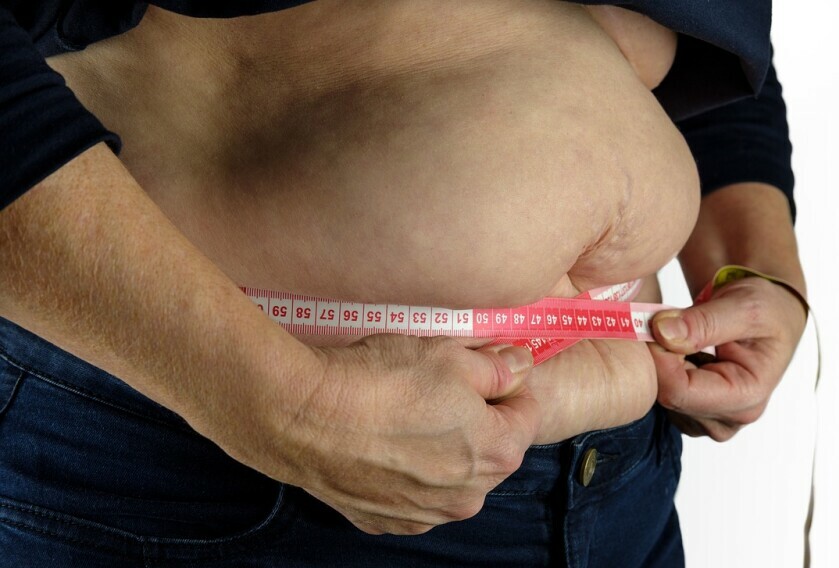
When I talk about belly fat, you might picture someone who just needs to shed a few pounds. But it’s much more serious than that. There are two main types of belly fat: subcutaneous, which sits right under the skin, and visceral, which surrounds your organs. Visceral fat is the one I’m most concerned about because it poses significant health risks.
Research has made it clear that visceral fat contributes to chronic conditions, such as heart disease, type 2 diabetes, and even certain cancers. That’s a sobering thought, and it shows why targeting belly fat can be about more than just improving appearance: it’s about enhancing your overall health.
It’s clear that we need a strategy that tackles belly fat from multiple angles. While I’ll be focusing mainly on exercises to help with this, I want to stress that exercise is just one piece of the puzzle. Your journey to a healthier midsection involves diet, stress management, and sleep, too. This comprehensive approach is critical because it tackles underlying causes, not just the symptoms.
Establishing Realistic Goals for Belly Fat Reduction
I understand that you might be eager to see results when it comes to losing belly fat. But before you jump into a new fitness regimen, it’s critical to establish goals that are realistic for you. Here’s why: setting the bar too high, too soon, can lead to frustration and burnout, potentially derailing your entire effort.
Now, let’s talk about diet for a second. While this article focuses on exercise, remember that what you eat plays a pivotal role in controlling belly fat. Think of your diet as the foundation and exercise as the framework; you really can’t have one without the other if you want a solid structure.
So how do you measure progress? Well, the scale can sometimes be deceitful because it won’t differentiate between muscle gain and fat loss. Instead, consider things like how your clothes fit, body measurements, and overall energy levels. These indicators can provide a more accurate picture of your success.
Cardiovascular Workouts: A Key Player in Burning Belly Fat
Cardio workouts stand out when it comes to trimming belly fat. I am not talking about long, tedious sessions on the treadmill. The science backs up more dynamic approaches, like HIIT, that raise your heart rate and could torch calories even after you’ve finished exercising. This afterburn effect is formally known as excess post-exercise oxygen consumption (EPOC), and it’s like getting a bonus just for working out smart.

Of course, traditional steady-state cardio has a place too. Activities like running, cycling, or swimming at a consistent pace can certainly help burn fat. But here’s the catch: it takes time. You need to sustain the activity for at least 30 minutes to tap into stored fat effectively. Still, it’s a viable choice, especially if you’re just starting or prefer a less intense session.
Safety always comes first. Before you begin any workout plan, it might be wise to talk with a healthcare professional, especially if you have pre-existing health concerns. And remember, proper form and pacing are crucial – start at a level that matches your current fitness and gradually increase the intensity to avoid injury. Incorporating cardio intelligently into your exercise regimen will pay off in the long run – and it could mean saying goodbye to that stubborn belly fat.
Strength Training: Building Muscle to Boost Fat Loss
You might think that lifting weights is only for those who want to gain muscle, but it’s just as important for losing belly fat. Muscle tissue burns more calories than fat tissue, even when you’re at rest. More muscle mass means a higher resting metabolic rate.
When it comes to targeting belly fat, total-body strength training is more effective than ab-specific workouts. Exercises like squats, deadlifts, and bench presses engage multiple muscle groups and burn more calories. Additionally, compound movements improve core strength indirectly, which can help flatten your stomach area.
Creating a workout plan is your first step. Don’t just focus on the number of reps or the weight you’re lifting; your form is crucial to prevent injuries and ensure you’re working the right muscles. Seeking guidance from a fitness professional can be a huge advantage here.
Two to three strength training sessions per week can be a good starting point. Rest days are just as important to allow muscles to recover and grow stronger. Remember, the aim is not to do the heaviest lifts, but consistent and progressive workouts that challenge your muscles effectively and safely.
It’s worth mentioning that no exercise targets fat loss from the belly exclusively. But as your overall body fat decreases, so will your belly fat. Patience and perseverance are key!
Lifestyle Adjustments to Support Your Exercise Regimen
Success in losing belly fat involves more than just regular exercise; it requires a wider lifestyle adjustment. Achieving and maintaining a healthy weight, especially around the midsection, is significantly influenced by how well you manage other aspects of your life.
Sleep cannot be underrated in your fat-loss journey. Aim for 7 to 9 hours of quality sleep each night to help regulate your appetite hormones and give your body the rest it needs to recover from workouts.
Stress also dramatically affects body weight. Elevated stress levels can lead to comfort eating and increased fat storage around your belly. Implement stress-reduction strategies such as mindfulness, deep breathing exercises, or even expressive writing to help manage stress.
Lastly, let’s talk about vices like alcohol and smoking, which are often overlooked when it comes to weight management. Consistently consuming alcohol can add excess calories and reduce your metabolism’s efficiency, while smoking has been linked to abdominal fat accumulation. Cutting back, or better yet, quitting these habits altogether, can have a notable positive effect on your belly fat loss goals.
In conclusion, while exercise is a vital component of reducing belly fat, it’s the synergistic effect of a healthy diet, sound sleep, managed stress levels, and a vice-free lifestyle that truly makes the difference. Keep in mind, persistence is key, and these changes must be sustained over time to see and maintain results. So take care of your body, and it will take care of you.
Thanks for reading. Your comments and questions are very welcome. Till I come your way again. Stay active and fit. Shalom.

HI,
I really appreciate the comprehensive and realistic approach you’ve taken in tackling the issue of belly fat. It’s good to see a focus on the serious health implications of visceral fat, rather than just the aesthetic side of things.
I totally agree that a multi-faceted strategy is essential. The way you emphasized the combination of exercise, diet, stress management, and sleep really resonated with me. It’s easy to get caught up in just one aspect, like exercise, and forget that our overall lifestyle plays such a crucial role in achieving and maintaining a healthy weight. It’s so important to set achievable milestones to avoid frustration and burnout.
Overall, your article is a fantastic guide for anyone looking to lose belly fat in a healthy, sustainable way. I’m looking forward to incorporating some of these tips into my own routine. Thanks for the valuable insights and practical advice!
Hi Kavitha.
Thank you so much for your thoughtful feedback! I’m thrilled to hear that the article resonated with you, especially the emphasis on the health implications of visceral fat. It’s true that focusing on a holistic approach—balancing exercise, diet, stress management, and sleep—is crucial for sustainable weight loss and overall well-being.
I’m glad you found the strategies practical and achievable. Setting realistic milestones is indeed key to staying motivated and avoiding burnout. I’m confident that incorporating these tips into your routine will bring you positive results. Thank you again for your kind words, and I wish you the best on your journey to better health!